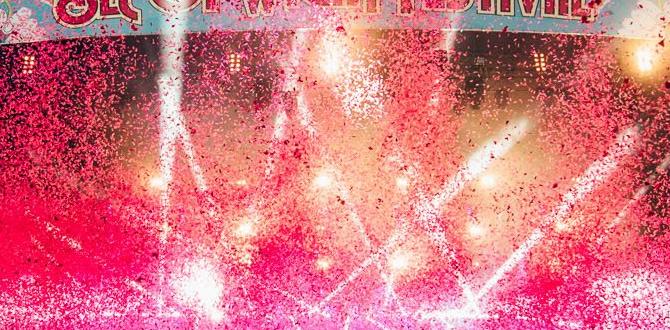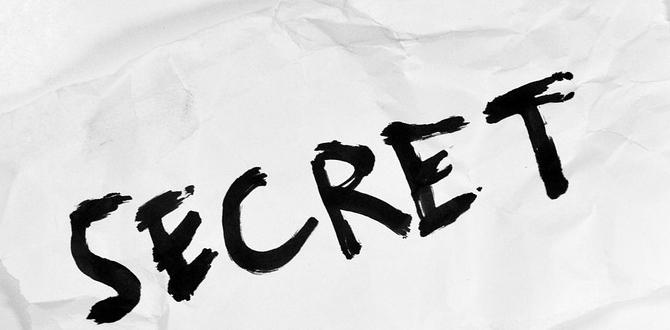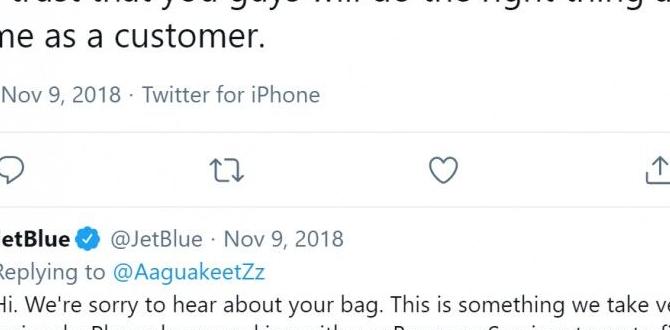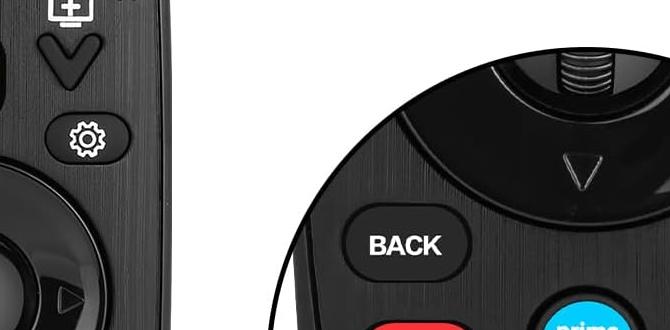Navigate Bangkok with ease using this beginner’s guide to the city’s efficient public transport options, including the BTS Skytrain, MRT Subway, and Chao Phraya Express Boats, to save time and money.
Bangkok is a vibrant city, but getting around can feel like a maze for first-timers. The sheer volume of options – from the sleek Skytrain to bustling boats – can be overwhelming. Don’t let transport worries dim your exploration of this amazing destination! This guide will break down Bangkok’s public transport into simple, easy-to-understand steps. We’ll equip you with all the essential knowledge to hop on, zip around, and discover the best of Bangkok like a pro. Get ready for smoother travels!
Your Bangkok Public Transport Cheat Sheet: Master the City with Ease
Welcome to your ultimate resource for navigating Bangkok’s public transportation system! As seasoned travelers, we know that mastering local transit is key to unlocking a city’s true charm and experiencing it without breaking the bank. Bangkok offers a fantastic network of public transport that’s surprisingly efficient, affordable, and often the quickest way to beat the infamous city traffic. Forget the stress of hailing cabs or deciphering complex routes; this cheat sheet is designed to make you feel confident and prepared. Let’s dive into the must-knows for getting around Bangkok like a local!
Understanding Bangkok’s Public Transport Landscape
Bangkok’s public transport is a well-integrated system designed to cater to millions of commuters and tourists daily. The core of this system consists of three main pillars: the BTS Skytrain, the MRT Subway, and the Chao Phraya Express Boat. Each offers a unique perspective on the city and serves different needs. Knowing how each works will allow you to choose the fastest, most scenic, or most convenient option for your particular journey.
The Bangkok Mass Transit System (BTS) Skytrain: Your Elevated Highway
The BTS Skytrain is arguably the most popular and user-friendly public transport option for tourists. Its elevated tracks offer a fantastic bird’s-eye view of the city, and its air-conditioned stations and carriages provide a welcome escape from Bangkok’s heat. The Skytrain is clean, punctual, and connects many of the city’s major commercial hubs, shopping districts, and tourist attractions.
Key BTS Lines and Coverage
- Sukhumvit Line (Light Green): This is the longest and busiest line, running from Mo Chit in the north to Bearing in the east. It covers major areas like Siam (shopping paradise), Asok (business district and connecting point to MRT), and Phrom Phong (upscale malls and nightlife).
- Silom Line (Dark Green): This shorter line runs from National Stadium (near MBK Center) to Wongwian Yasai. It serves key areas like Siam, Chulalongkorn University, and Silom Road, a center for nightlife and business. It also connects to the MRT system at Sala Daeng station.
- Gold Line (A slightly newer, shorter line): This line connects Krung Thon Buri on the Silom Line to Klong San, a developing riverside area with major shopping centers like ICONSIAM. It’s a useful connector for river access.
How to Use the BTS Skytrain
- Finding a Station: BTS stations are easily identifiable by their green and silver signs and are typically located above major roads.
- Purchasing Tickets:
- Single Journey Tickets: At each station, you’ll find ticket machines. These machines accept coins and some banknotes. Select your destination on the touchscreen, the fare will be displayed, insert your money, and collect your ticket and change.
- Stored Value Cards (e.g., Rabbit Card): For frequent travelers, a Rabbit Card is highly recommended. You can purchase and top up this card at customer service centers in BTS stations. Tap the card to enter and exit the gates. This saves time and often offers slight discounts. You can learn more about the Rabbit Card on their official website.
- Boarding and Riding: Follow the signs to the correct platform for your direction of travel. Listen for announcements and check the destination displays in the carriage.
- Exiting: Tap your ticket or card at the exit gates. If you purchased a single journey ticket, ensure you have the correct fare; if not, you may need to go to the ticket counter.
BTS Skytrain Tips for a Comfortable Ride
- Peak Hours: BTS can get very crowded during morning (7-9 AM) and evening (5-7 PM) rush hours. Travel outside these times if possible.
- Accessibility: Most stations are equipped with escalators and elevators, making it manageable even if you have luggage or are traveling with children.
- Children: Children below a certain height (usually 90 cm) travel free.
- Personal Care Needs: If you’re like me and appreciate comfort during longer journeys, ensuring you have any necessary personal care items like discreet incontinence pads or child diaper solutions readily available can make your travel experience stress-free, even if you need to use a restroom at a station or a connected mall.
The MRT (Metropolitan Rapid Transit) Subway: Bangkok’s Underground Network
The MRT is Bangkok’s subway system and a vital complement to the BTS Skytrain. It dives beneath the city, offering efficient transport through areas not covered by the Skytrain and providing crucial connections between the two systems. The MRT is also known for its speed, cleanliness, and punctuality.
Key MRT Lines and Coverage
- Blue Line: This is the primary MRT line, forming a loop around central Bangkok and extending to various suburbs. It’s essential for reaching places like Bangkok’s Chinatown (Wat Mangkon station), areas around the Chao Phraya River (e.g., Sanam Chai station near the Grand Palace), and connects with the BTS at several points (e.g., Asok, Mo Chit, Chatuchak Park).
- Purple Line: This line extends northwest from Tao Poon, serving less-touristed residential areas. It connects with the Blue Line at Tao Poon.
- The upcoming Orange Line and extensions promise to further expand the network.
How to Use the MRT Subway
- Finding a Station: MRT stations are marked with a prominent “MRT” sign, often with a red circle, and are located underground.
- Purchasing Tickets:
- Single Journey Tokens: Unlike the BTS, the MRT uses plastic tokens for single journeys. You purchase these from ticket machines by selecting your destination and paying with coins or banknotes.
- Stored Value Cards: Similar to the BTS, the MRT supports stored value cards. The “MRT Card” can be purchased and topped up at customer service counters or machines. It works much like the BTS’s Rabbit Card.
- Boarding and Riding: Follow the signs to the correct platform. MRT trains run frequently.
- Exiting: Place your token or card on the reader at the exit gates.
MRT Subway Tips for a Better Journey
- Connectivity: The MRT is crucial for reaching key attractions like the Grand Palace and Wat Pho via Sanam Chai station and for exploring Chinatown.
- Air Conditioning: Stations and trains are well-air-conditioned, providing a cool respite.
- Luggage: If you’re traveling with larger luggage, the MRT can be very convenient, especially when connecting to airports or intercity travel.
Chao Phraya Express Boat: The Riverine Commuter
No trip to Bangkok is complete without experiencing its lifeline, the Chao Phraya River, and its integral express boat service. This is not just a tourist activity; it’s a daily commute for many, offering a unique and scenic way to navigate the city, especially for accessing historical sites along the riverside.
Understanding the Boat Flags and Routes
The Chao Phraya Express Boat service operates with different colored flags, each indicating a specific type of service and route. Understanding these flags is key to choosing the right boat.
| Flag Color | Service Type | Stops | Notes |
|---|---|---|---|
| No Flag (Local Line) | Local Line | Stops at every pier | Slowest but cheapest; used mostly by locals. |
| Green Flag | Local Express | Stops at major piers (approx. 29 piers) | A good balance of speed and coverage. |
| Yellow Flag | Semi-Express | Fewer stops than green (approx. 10-15 piers) | Faster than green, good for tourist destinations. |
| Orange Flag | Common/Tourist Boat | Limited stops, generally focused on tourist areas | Most frequent line, stops at key tourist piers. This is usually the best option for visitors. |
| Blue Flag | Tourist Boat | Limited stops, curated tourist route | Specifically for tourists, often more comfortable but can be pricier and less frequent. Not always available. |
Key Piers and Attractions
- Tha Chang Pier (N9): Gateway to the Grand Palace and Wat Phra Kaew.
- Tha Tien Pier (N8): Close to Wat Pho (Reclining Buddha).
- Saphan Taksin Pier (S6, BTS): The main hub connecting to the BTS Skytrain. From here, you can catch any of the express boats.
- Nonthaburi Pier (N30): The northernmost point for many express boat routes.
- ICONSIAM (Gold Line/Private Pier): Accessible via the Gold Line BTS or a dedicated pier served by some Chao Phraya boats.
How to Use the Chao Phraya Express Boat
- Find the Right Pier: Look for signs indicating the Chao Phraya Express Boat.
- Identify Your Boat: Look for the flag color that matches your intended route or the piers you want to visit. The orange flag is the most common and recommended for tourists.
- Purchase Tickets: For orange and yellow flag boats, you can usually buy tickets directly from a ticket vendor on the pier or from the boat attendant once on board. For the Blue Flag tourist boat, there’s a dedicated ticket booth.
- Boarding: Wait for passengers to disembark before boarding.
- Riding: Hold on tight as the boat can be bumpy. Enjoy the views!
- Exiting: Be ready to disembark at your desired pier.
You can find detailed route maps and information on the official Chao Phraya Express Boat website.
Chao Phraya Express Boat Tips for a Scenic Trip
- Best Time to Travel: Early morning or late afternoon offers beautiful light for photos of the riverside temples and city skyline.
- Avoid Rush Hour: Like the BTS, boats can become crowded with commuters during peak times.
- Ferry vs. Tourist Boat: The orange flag boats are frequent and affordable, stopping at most major tourist spots. The blue flag boat is more geared towards tourists but might be less frequent.
- Navigation: Download a map of the piers beforehand or use an app like Google Maps to help you identify your nearest pier and destination.
Other Essential Bangkok Public Transport Options
While the BTS, MRT, and Chao Phraya Express Boats form the backbone of Bangkok’s public transport, there are a few other options worth knowing about, especially for shorter distances or to reach specific areas.
Airport Rail Link (ARL)
- This is the most efficient way to travel between Suvarnabhumi Airport (BKK) and central Bangkok.
- Express Line: Direct service from BKK to Phaya Thai station (connects with BTS).
- City Line: Stops at several stations on its way to Phaya Thai, making it a more affordable but slower option.
- New Extension: A new extension connects Makkasan (Airport Rail Link station directly linked to MRT Phetchaburi) to Don Mueang Airport (DMK) via the SRT Red Line, creating a significant rail network.
Taxis and Ride-Sharing Apps
- Taxis: Readily available and relatively inexpensive. Always insist that the driver uses the meter (“meter, please”). Make sure they reset it at the beginning of your trip.
- Grab: The most popular ride-sharing app in Southeast Asia. It’s convenient, offers fixed prices upfront, and allows you to book taxis, private cars, or even motorbikes. It’s a great option if you’re concerned about language barriers or meter disputes. This is often my go-to for added convenience and peace of mind.
Tuk-Tuks and Motorbike Taxis
These are iconic Bangkok experiences but should be approached with caution. They are best for short distances and can be fun, but always negotiate the price before getting in. Motorbike taxis are extremely quick for weaving through traffic but are only recommended for short trips if you’re comfortable with speed and helmets.
Making Your Journey Smooth: A Step-by-Step Approach
To make your travel in Bangkok truly seamless, here’s a consolidated approach:
- Plan Your Route: Before you leave your accommodation, use Google Maps or a similar app to identify the best public transport combination for your destination. It will often suggest BTS, MRT, bus, or boat routes.
- Familiarize Yourself with Stations: Note the names of the stations closest to your hotel and your intended attractions, as well as any transfer stations (like Siam, Asok, or Saphan Taksin).
- Purchase the Right Ticket: Decide between single-journey tickets/tokens or a stored value card (like the Rabbit Card for BTS/MRT combined travel if available, or separate cards if not). For short stays, single tickets are fine. For longer stays or frequent use, a card is more convenient.
- Be Prepared for Queues: Especially during peak hours or at popular attractions, expect short queues for ticketing and boarding.
- Always Have Small Change: While machines accept banknotes, having coins for ticket machines and small vendors can be incredibly helpful.
- Stay Hydrated and Comfortable: Bangkok’s climate is tropical. Carry water, and if you need to manage personal care like incontinence, ensure you have your discreet supplies ready, perhaps in a well-organized carry-on bag, so you’re prepared for any journey length.
- Leverage Ride-Sharing for Directness: If you’re traveling late at night, have significant luggage, or heading to a location not easily served by public transport, Grab is an excellent, reliable option.
Bangkok Public Transport: Fare Comparison and Speed
To give you a clearer picture, here’s a simplified comparison of common public transport options in Bangkok:
| Transport Mode | Approximate Fare (THB) | Average Speed/Efficiency | Best For |
|---|---|---|---|
| BTS Skytrain | 17 – 59 (depending on distance) | High; avoids traffic, frequent service | Covering central, north, and east Bangkok; shopping and business districts. |
| MRT Subway | 17 – 48 (depending on distance) | High; avoids traffic, frequent service | Reaching areas not on BTS, Chinatown, Grand Palace, connecting lines. |
| Chao Phraya Express Boat (Orange Flag) | 10 – 32 (depending on distance) | Moderate; subject to river traffic but scenic | Accessing riverside attractions (Grand Palace, Wat Pho, Wat Arun), experiencing local life. |
| Airport Rail Link (City Line) | 15 – 45 (to Phaya Thai) | High; direct airport connection | Traveling to/from Suvarnabhumi Airport. |
| Taxi (Metered) | Starts at 35 THB + per km |





